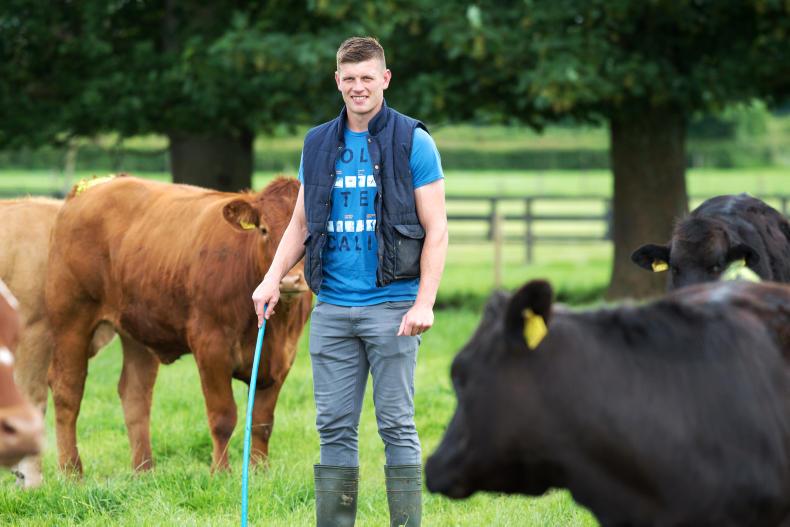All calves were weighed last week, birth weight (BW), liveweight (LW) and average daily gain (ADG) figures are all presented in Table 1.
The average date of birth for these calves is 15 March. The figures presented below are behind calf performance at a similar stage in 2016, when heifer calves had an ADG of 1.17kg/d and a LW of 250kg, while bull calves had an ADG of 1.31kg/d and weighed 280kg.
This difference in performance may be due to the fact that 32% of cows are first calvers following a high level of culling in 2016

Ground conditions
The last seven days has brought 23mm of rain resulting in poor ground conditions and it has subsequently proved quite challenging to achieve our target post-grazing sward height of 4cm to 4.5cm.
Over the past number of weeks, we have had one cow that was repeatedly suffering from lameness.
The same cow suffered with lameness throughout last year and given the performance of her calf in 2017, it’s no surprise that she was retained.
However, this cow was culled this week at a LW of 680kg and following a kill-out of 53%, had a carcase weight of 360kg.
Her bull calf showed no sign of stress following her cull and currently weighs 253kg with an ADG since birth of 1.33kg/d.
Fertiliser
This week will bring an end to the open period for fertiliser spreading.
We will ensure to spread CAN (one bag/acre) until the closing period, weather depending, to help build our grass supply into the autumn.

Grass10 Grazing Event: Wednesday 13 September at 11am The Derrypatrick Herd, Teagasc Grange.
Farm cover: 900kg DM/ha.Growth: 60 kg DM/ha/day.Demand/ha: 42kg DM/ha/day.Days ahead: 25.Spread CAN to help build grass supply.Gradually increase concentrate supply to beef heifers and steers.Final pregnancy scan to be carried out. Read more
BETTER farm beef programme
Take our ploughing livestock demo survey
Beef markets
All calves were weighed last week, birth weight (BW), liveweight (LW) and average daily gain (ADG) figures are all presented in Table 1.
The average date of birth for these calves is 15 March. The figures presented below are behind calf performance at a similar stage in 2016, when heifer calves had an ADG of 1.17kg/d and a LW of 250kg, while bull calves had an ADG of 1.31kg/d and weighed 280kg.
This difference in performance may be due to the fact that 32% of cows are first calvers following a high level of culling in 2016

Ground conditions
The last seven days has brought 23mm of rain resulting in poor ground conditions and it has subsequently proved quite challenging to achieve our target post-grazing sward height of 4cm to 4.5cm.
Over the past number of weeks, we have had one cow that was repeatedly suffering from lameness.
The same cow suffered with lameness throughout last year and given the performance of her calf in 2017, it’s no surprise that she was retained.
However, this cow was culled this week at a LW of 680kg and following a kill-out of 53%, had a carcase weight of 360kg.
Her bull calf showed no sign of stress following her cull and currently weighs 253kg with an ADG since birth of 1.33kg/d.
Fertiliser
This week will bring an end to the open period for fertiliser spreading.
We will ensure to spread CAN (one bag/acre) until the closing period, weather depending, to help build our grass supply into the autumn.

Grass10 Grazing Event: Wednesday 13 September at 11am The Derrypatrick Herd, Teagasc Grange.
Farm cover: 900kg DM/ha.Growth: 60 kg DM/ha/day.Demand/ha: 42kg DM/ha/day.Days ahead: 25.Spread CAN to help build grass supply.Gradually increase concentrate supply to beef heifers and steers.Final pregnancy scan to be carried out. Read more
BETTER farm beef programme
Take our ploughing livestock demo survey
Beef markets








 This is a subscriber-only article
This is a subscriber-only article













SHARING OPTIONS: